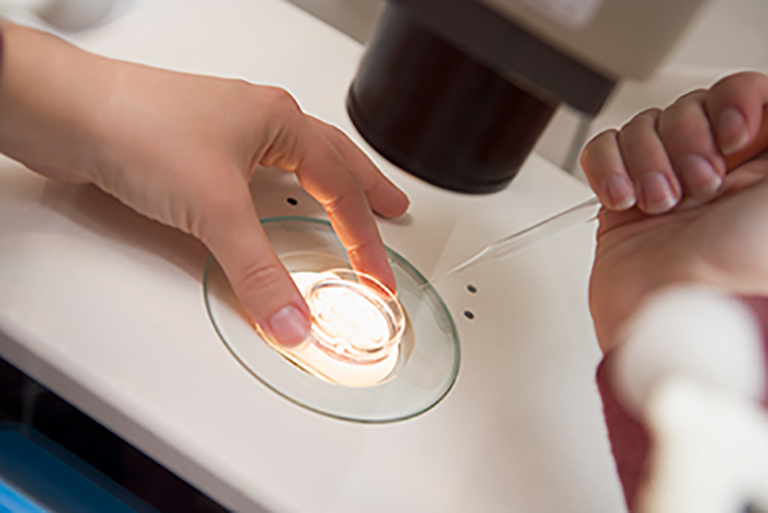
Embryo freezing involves the freezing and storing of embryos obtained by ovarian stimulation, egg retrieval, and in vitro fertilization. Embryo freezing is performed by a reproductive endocrinologist. Prior to embryo freezing, the patient undergoes a cycle of in vitro fertilization. This process begins with ovarian stimulation using hormones that are self-injected daily by the patient for about 10 days, followed by a transvaginal retrieval of the eggs under anesthesia. The eggs are then fertilized with sperm from a partner or donor. The resulting embryos are frozen and stored for possible future use.
Note: Ovarian stimulation to cryopreserve eggs or embryos can be started at any time of the menstrual cycle avoiding long delays in treatment.
Who is Eligible?
Post-pubertal to pre-menopausal female (ages ~15-45) who are willing to use partner or donor sperm to create embryos and who are willing to store frozen embryos are appropriate candidates for this option.
What are the Potential Risks/Concerns?
There is a risk hormones administered for ovarian stimulation will elevate estrogen levels. Medications such as aromatase inhibitors can be given to lower estrogen levels in women with hormone-sensitive tumors or with a history of DVT/PE. This process takes 2 to 3 weeks.
Future Use and Success Rates
When ready to attempt pregnancy, the frozen embryos are thawed and transferred to the uterus of the patient or, in some cases, a gestational carrier. If the patient does not have adequate ovarian function at the time of the planned transfer, she can be given hormones for about three weeks before the transfer and three months after to support the pregnancy. Embryo freezing is a highly successful technique that has been in use for more than 25 years. Nationwide, pregnancy rates for frozen embryo cycles range from 42.4% for women under 35 and 17.8% for women over 42.1 1
References
- SART National Data Summary 2012. https://www.sartcorsonline.com/rptCSR_PublicMultYear.aspx?ClinicPKID=0